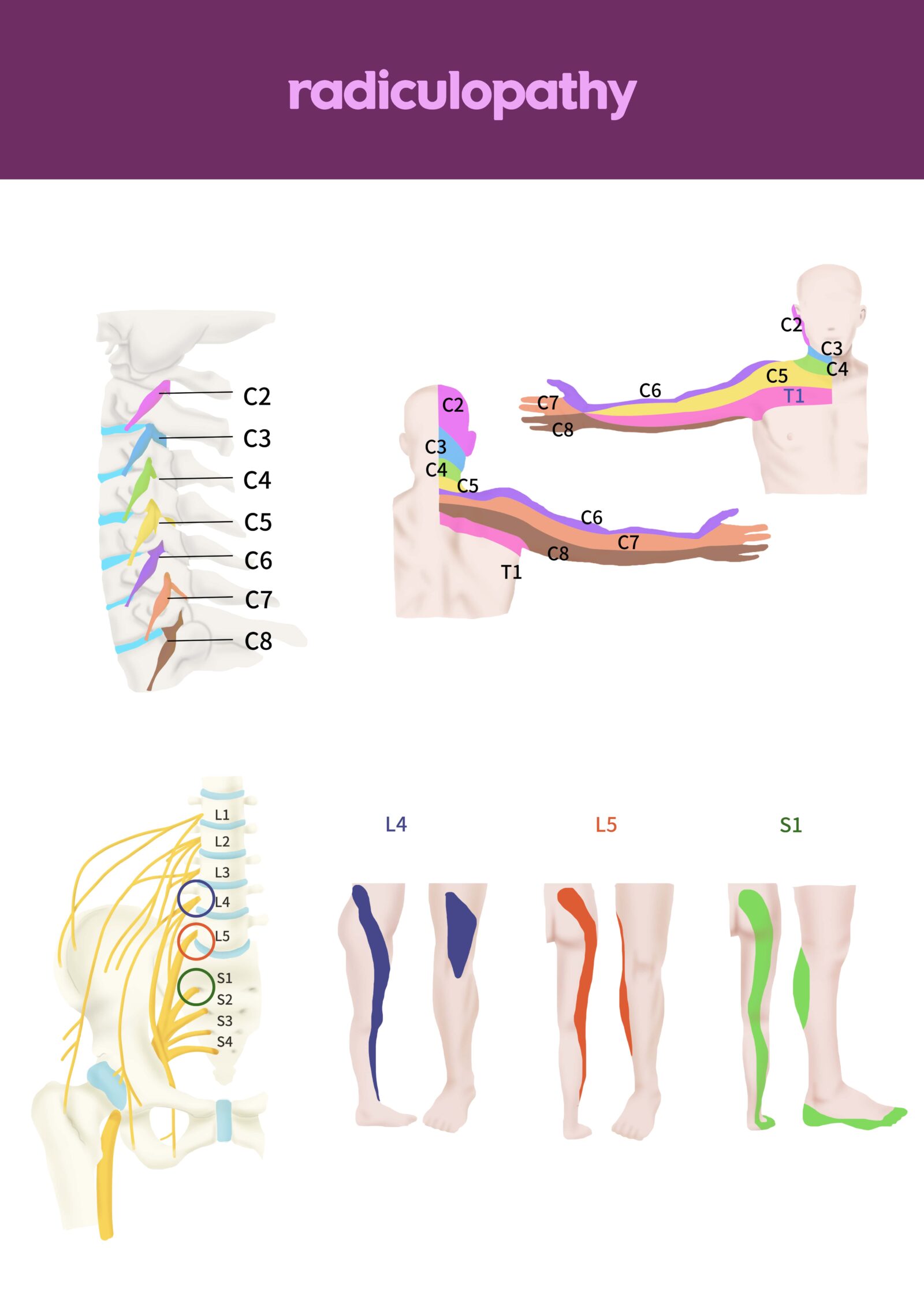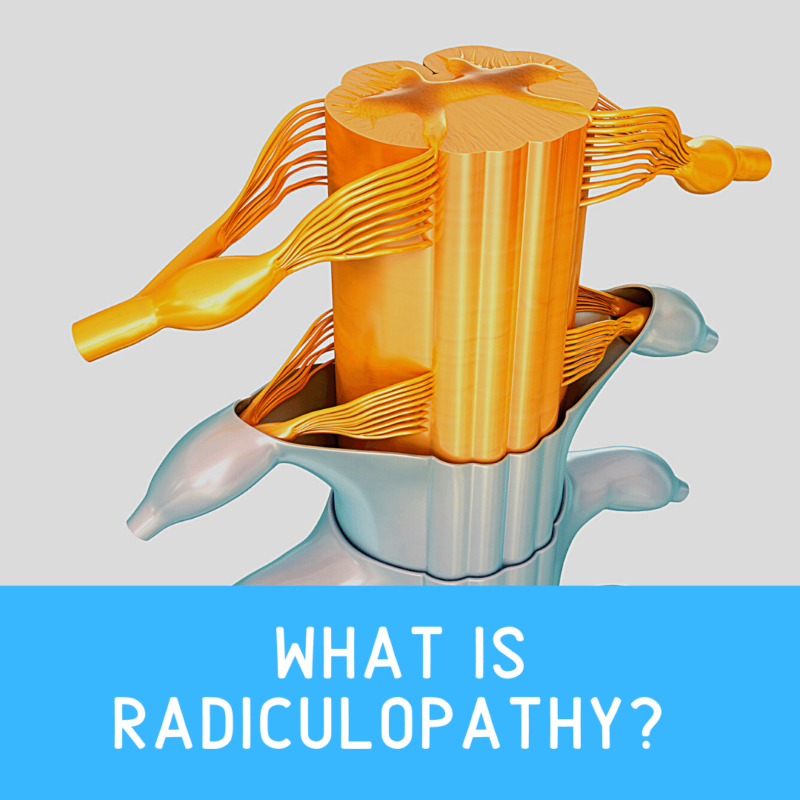The spine is the most complex anatomy in the human body. It houses and protects our spinal cord, which connects to every organ in the body. The spine also houses over a dozen pairs of nerves that provide sensation and movement to our arms, legs, torso, and head. Radiculopathy refers to any disease or disorder that affects the root, or origin of a nerve. The word “radiculopathy” comes from the Latin words radix (root) and pathos (disease). This condition can arise when one or more nerves becomes compressed by a herniated disc or other problems occurring within the bones in your back. This blog post discusses how radiculopathy can occur and how a spinal specialist can help.
What is Radiculopathy?
Radiculopathy occurs when one or more of your nerve roots are compressed. The nerves in our spine come out from the spinal cord and run through holes (or foramen) on either side of each vertebrae, until they reach their destination to send signals back to the brain. When these small spaces become even smaller, it can cause compression on the nerve roots that leads to pain, numbness, tingling or weakness in the arms and hands. There are different types of radiculopathy:
- cervical radiculopathy, which involves the nerves originating from your neck
- thoracic radiculopathy, which involves the nerves originating from your mid to upper back
- lumbar radiculopathy, which originates from nerves in the lower back and is commonly known as sciatica
Causes of Radiculopathy

Radiculopathy can be caused by a variety of conditions that affect the spine, such as:
Herniated Disc
A herniated disc occurs when the gel-like substance that exists between each vertebrae begins to push against the outer wall of its compartment and bulge outward in one area. In most cases this pressure is relatively minor and should not cause any problems for you other than mild pain around where the disc herniated. However, in some cases this pressure can be greater and may cause significant pain or neurological symptoms.
Bone Spurs
A bone spur is also called an osteophyte which occurs when the outer layer of a vertebra becomes rough due to arthritis or old age. Bone spurs occur gradually over time as you get older but they too can cause pinching of your nerves and result in pain, numbness, tingling or weakness.
Spinal Tumors
A tumor is a mass that can be benign (non-cancerous) or malignant (cancerous), located on the outside of a vertebrae that may also affect how it functions with surrounding tissues.
Degenerative Disc Disease
Degenerative Disc Disease (DDD) is characterized by the breakdown of cartilage in your intervertebral discs. The disc loses its elasticity and becomes dry, stiff or rigid over time which can cause pain when you move your back that improves with rest. This condition may also be accompanied by a herniated disc, bone spurs or other conditions affecting the spine.
Spinal Stenosis
Spinal stenosis is a condition in which the spinal canal becomes too narrow to accommodate your spinal cord and nerve roots. The spaces where these nerves exit may also become smaller, causing compression on the affected nerve root.
How Spinal Specialists Treat Radiculopathy
If your doctor suspects that you have radiculopathy, they will begin the workup by performing a thorough physical exam and history to determine where exactly along your spine (cervical, thoracic, lumbar) this nerve compression is occurring. Your doctor may also order imaging tests such as MRI scans in order to diagnose the specific cause of this nerve compression and come up with a treatment plan to help you feel better.
If your doctor diagnoses you with radiculopathy, the next step is to determine what caused this condition such as disc herniation or bone spurs. Your doctor may treat this problem by prescribing physical therapy, anti-inflammatory medications, or cortisone injections into affected areas in order to reduce any pain and inflammation that can contribute to your symptoms. In some cases surgery may be necessary if nonsurgical treatments fail and severe damage has been done to surrounding tissues near the spine. If so, your surgeon will carefully remove all parts of the injured tissue during an operation called a laminectomy that helps decompress nerves that are compressed or pinched.










